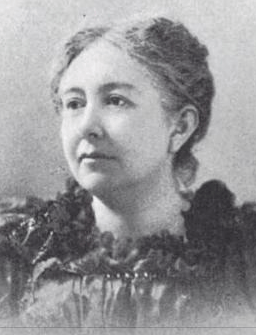Edith Archibald facts for kids
Quick facts for kids
Edith Archibald
|
|
|---|---|
 |
|
| Born | April 7, 1854 |
| Died | May 11, 1936 (aged 82) |
| Nationality | Canadian |
| Occupation | suffragist, writer |
| Spouse(s) |
Charles A. Archibald
(m. 1874) |
Edith Jessie Archibald (born April 5, 1854 – died May 11, 1936) was a Canadian woman who worked hard to make life better for others. She was a suffragist, which means she fought for women's right to vote. Edith was also a writer.
She led important groups like the Maritime Women's Christian Temperance Union (WCTU). She also led the National Council of Women of Canada and the Local Council of Women of Halifax. Because of her many efforts to help society, King George V called her the "Lady of Grace." In 1997, the Canadian government recognized her as a Person of National Historic Significance. This means she was a very important person in Canada's history.
Contents
Early Life and Family
Edith Jessie Archibald was born in St. John's, Newfoundland. Her parents were Catherine Elizabeth (Richardson) Archibald and Sir Edward Mortimer Archibald. Her family was well-known for serving the public.
She went to school in London and New York City. This was because her father worked there as a British Consul General. A Consul General helps people from their home country who are living abroad.
Marriage and Moving to Halifax
When Edith was 20, she married her cousin, Charles A. Archibald. He was a mining engineer. He owned a coal mine called Gowrie colliery in Cow Bay, Nova Scotia.
In 1893, Charles sold the mine. He then became the president of the Bank of Nova Scotia in Halifax. Edith and Charles had four children: Susan Georgina (called Georgie), Thomas, Charles, and Edward. They lived in a large house called "Seaview" in Port Morien before moving to Halifax.
Fighting for Change: The WCTU
Edith Archibald joined the Women's Christian Temperance Union (WCTU) in the 1880s. This group worked to improve society, especially for women and children. From 1892 to 1896, she was in charge of "Parlour Meetings" for the Maritime region.
Parlour Meetings and Community Action
Parlour meetings were social events held in people's homes. They were a way to organize activities and teach women about important issues. Edith believed these meetings were very helpful. She asked 54 local groups what they thought of the meetings. She also wrote about them in the WCTU's national newspaper.
Edith knew that local actions were key to reaching the group's goals. She even led members on visits to three illegal bars in Cow Bay.
Helping Women and Children
During her time with the WCTU, Edith focused on many problems. These included family violence, child neglect, and poverty. In 1892, she became the President of the WCTU. She worked with other women to create community services. These services aimed to make life better for women and children. They helped set up libraries and homes for children who needed care.
Edith also strongly supported women's right to vote. A popular saying used by the WCTU was "Agitate, Educate, Legislate." This meant they wanted to stir up discussion, teach people, and make new laws.
Other Ways She Helped Society
Edith was a leader in many other groups too. She was part of the National Council of Women of Canada. She also led the Halifax branch of the Victorian Order of Nurses (VON) from 1897 to 1901. The VON provides nursing care in communities.
She worked hard to get a children's hospital built in Halifax. After it was built, she became a director of the hospital.
Leading the Local Council of Women
In 1895, after her family moved to Halifax, Edith became President of the Halifax Local Council of Women. She briefly left this role due to religious disagreements. However, she returned and served as president from 1899 to 1905.
As president, Edith led a campaign to get women on the Halifax School Board. She also continued to fight for women's right to vote.
War Efforts and Women's Vote
In 1914, she became vice-president of the Nova Scotia Red Cross. Her job was to manage the department that looked after Canadian prisoners of war overseas. She was honored by the Order of Jerusalem for her work during World War I.
Edith spent decades fighting for women's right to vote. In 1917, she led a group of women to meet with Nova Scotia Premier George Henry Murray. They convinced him not to stop the suffrage bill. The Nova Scotia legislature finally gave women the right to vote in 1918.
Edith Archibald also helped start the Ladies' Musical Club of Halifax. She was its first president. She worked to create chances for women to become composers. She was also a director of the Victoria School of Art and Design.
Her Writing Life
Later in her life, Edith wrote short stories, plays, and articles. She also wrote several books.
Books for Family and History
One of her books was Bed-Time Stories for My Grand-Children (1910). This was a private book written after her daughter Georgie died in 1909. Edith wrote it so Georgie's children would know what their mother's childhood in Cow Bay was like.
In 1924, she published a book about her father. It was called Life and Letters of Sir Edward Mortimer Archibald, K.C.M.G., C.B.. She also wrote The Token: A Tale of Cape Breton Island. This story started as a play in the 1920s and became a novel in 1930. The story takes place after the American Civil War. It is about the adventures of a character named Angus McRory.
Other books she wrote include Stray Songs for Glad Days and Sad Days (1894). She also wrote Gufshathi and Herriaman: A Missionary Story.


